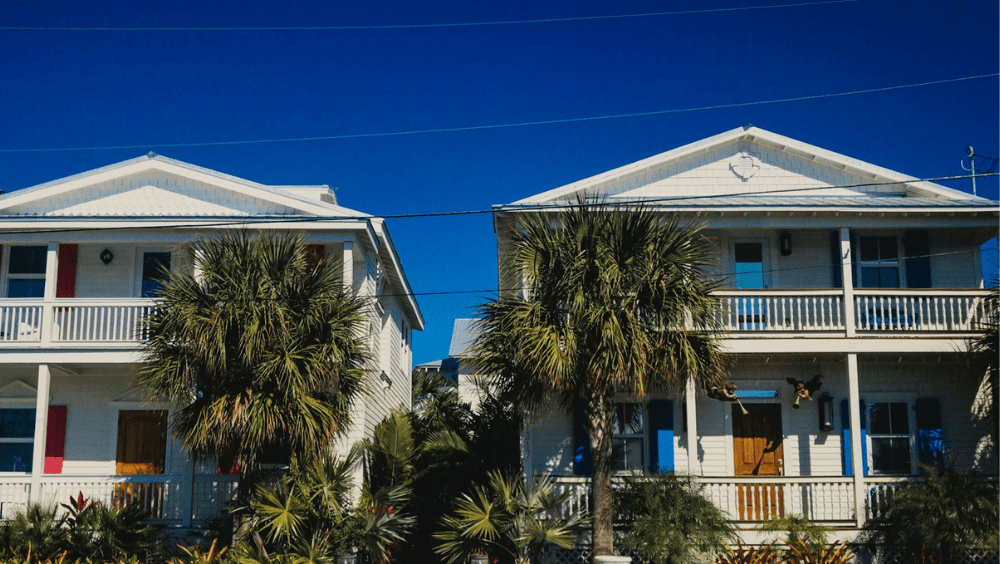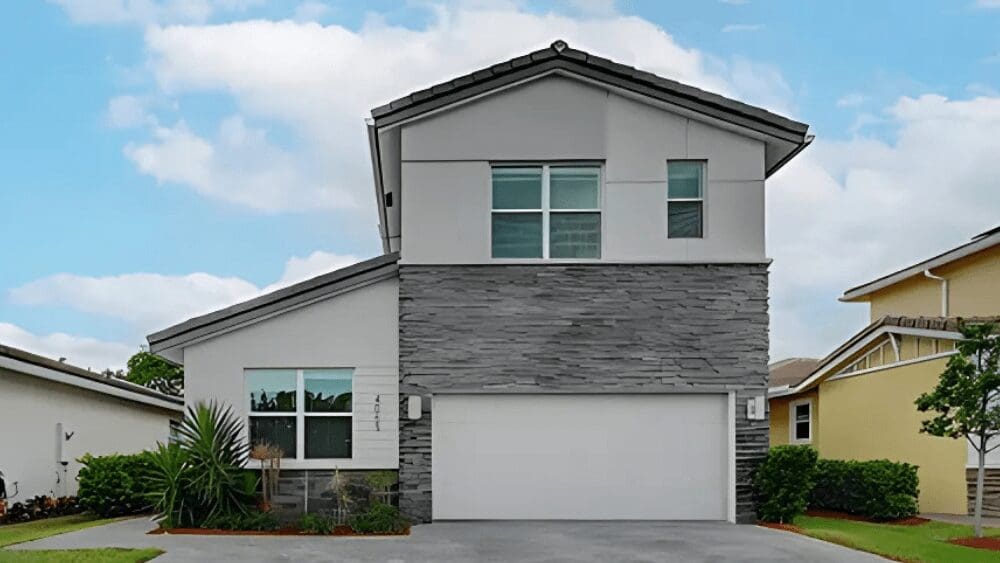
Beachfront, lakefront, riverfront –– real estate described with any of these words makes buyers envision tranquil views and endless recreation. For many homebuyers, living in a waterfront home means an everyday-vacation state of mind! But as appealing as those daydreams may be, waterfront homes aren’t for everyone. Before investing the extra cash, it’s important to understand the good and the bad of waterfront homes. Expert knowledge is key. That’s why we spoke with Jayson Burtch, an award-winning real estate agent in Port Charlotte, Florida. His years of waterfront property experience combined with a look at some nationwide data can help you figure out if you should make that waterfront house a reality … or just keep dreaming. When looking at waterfront listings, it’s important to note the difference between “waterfront” and “water views.” If you’re looking for navigable water, you’ll want to narrow your search to listings that specify “waterfront”. But even with that designation, sometimes waterfront homes still don’t come with access to the water; sometimes, “waterfront” is misused to describe listings located on a retention pond or another unusable body of water. Burtch says it’s important to be clear with your real estate agent regarding your expectations. Let them know how you plan to use the property; if you own a boat, give them your depth, dock, and lift needs. If there’s any question from the listing, let them clarify the waterfront status before your showing. There are often restrictions around water usage. Before making an offer, you’ll want your agent to check the legal documents and title of the home to see what you can and can’t do on the water. Some questions to consider include: Waterfront property will likely have some sort of bulkhead or seawall. Depending upon your locale, this barrier between the land and the water could be made of concrete, wood pilings, metal, or rock. The seawall is an important part of the property, so have your agent inquire about its age and composition. Repairs or replacement of the seawall can be costly, so find out if those fall solely on the owner or if there’s any sort of community funding pool. After making an offer, you may also want to pay for a professional seawall inspection. Overall, a waterfront home can be a fantastic investment — one where years of memories are made! But homebuyers need to be prepared to count the costs before jumping in. Weighing the benefits against the drawbacks can help. Homebuyers are usually drawn to waterfront property for the views and the recreation potential. Boating, fishing, beachcombing, swimming, kayaking — the list of waterside activities holds potential for endless fun and relaxation. Having access directly to water, mere steps away, brings an exponential quality-of-life increase for some homeowners. Living near the water also brings proven mental health benefits. A recent study indicates that those who live near “blue spaces” display a consistently higher sense of wellbeing and happiness than those who live in urban environments. Higher levels of vitamin D, better social interactions, and a more attuned sense of mindfulness are touted as possible links between waterfront locations and greater mental health. Because waterfront property is limited in supply with high buyer demand, the appreciation rate tends to be more steady over time. That means waterfront property will usually grow in value and can be less prone to market downturns than nearby landlocked equivalents. Generally speaking, scarcity represents security when it comes to property investments, and waterfront property is a scarce commodity. “You can put new streets in anywhere,” Burtch says. “But they’re not putting in any more waterways, so it’s a very limited supply. It’s always a safer investment.” In addition, some homebuyers are drawn to waterfront property for the rental income potential. Vacation rentals located on a body of water draw a higher rental price and may have more consistent tenants. For example, in Tampa, Florida, a three-bedroom, two-bathroom riverfront home brings in an average of $367 per night, whereas an inland house of the same size can be rented for only $120 per night according to VRBO. One of the best parts about owning a property on the water is the permanence of the view. As zoning ordinances change and land development increases, there’s really no guarantee that the “nature views” listed at other homes will last over time. But with property directly on the water, those coveted waterfront views aren’t going anywhere. Some homebuyers invest in waterfront property with the intention of making it a legacy property, or a home that can be passed along to future generations. Having a family lake home or family beach house can be a great place for extended family to gather on holidays or vacations. With water right outside the door, the risks toward the property increase by default. Flooding is a serious concern for waterfront homes, and homebuyers should take note of the FEMA flood map in order to assess the specific risk for their area. Rising water levels due to tides, storms, and climate change also present a risk for waterfront property owners. Erosion can change the shape and size of waterfront property, literally washing away the valuable land over time. Seawall specialists can help determine the specific risks and formulate a prescription for land protection. Waterfront property comes at a premium, for sure. For example, in Jacksonville, Florida, buyers pay 72% more to live on the water. That increased property value brings with it higher taxes, not necessarily because of increased levies but due more to the increase in the home’s valuation assessment. In addition, waterfront property owners must be aware of the increased cost of insurance. Due to increased risks of flooding and wind, some insurance companies may not insure oceanfront property, or they may require additional premiums. A separate flood insurance policy may be required, as well, especially when it comes to obtaining a mortgage for a waterfront home. Utilities might be less accessible in some waterfront locations, and that may lead to additional costs, too. Some waterfront homes may lack connection to municipal water sources and might therefore need a well or a septic tank. Septic pumping alone costs an average of $398. Wear and tear on waterfront property increases at a great rate due to elemental exposure. Homeowners should be prepared to maintain a rigorous maintenance schedule and take additional maintenance expenses into consideration. Seawall, dock, and boat lift maintenance are obvious factors. But even regular systems like the HVAC are subject to additional wear and tear. The lifespan of a regular HVAC unit is usually 15 to 20 years; for beachfront homes, the salt air cuts that timeline in half. Waterfront property owners may be required to maintain the body of water adjacent to their land as well. According to the Minnesota Lakes and Rivers Advocates, costs associated with treating lakes for invasive species are covered by the lakeshore landowners rather than by any government agency. Though it may seem counterintuitive considering those peaceful views, in some waterfront areas, homeowners may experience a loss of privacy. Boat traffic and open yards could mean that everything is “on display” for neighbors and tourists. “Some canals have more traffic than others,” Burtch says, so it’s important to be clear with your agent about your level of tolerance for that kind of traffic. When considering a home, buyers may want to visit both on a weekday and a weekend (during peak season, if possible) to gauge the level of privacy in the area. In light of the awesome benefits and also the very real drawbacks of waterfront property ownership, here are some important tips for those who are thinking about taking the plunge. Waterfront property can be a great purchase, as long as buyers go in with eyes wide open. Be cautious and intentional in your search, so that your waterfront home can be everything you dreamed it would be!What to know before you buy
Benefits of waterfront property ownership
Personal benefits
Financial benefits
Long-term benefits
Drawbacks of waterfront property ownership
Extra risks
Extra costs
Extra maintenance
Reduced privacy
Tips for buying waterfront property



